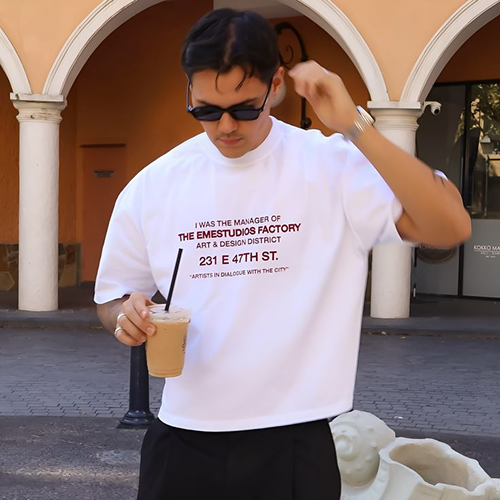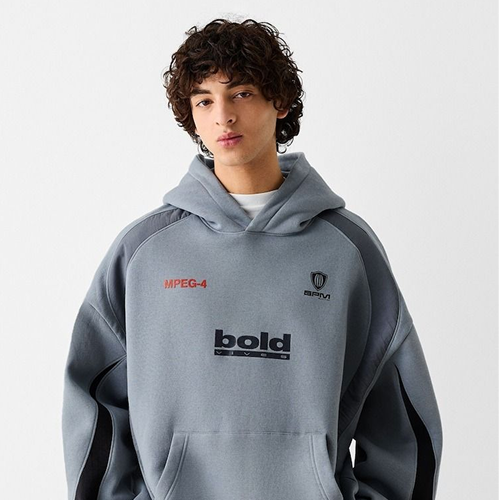Fashion used to be a statement of wealth, taste, and class. But today, it’s a mirror of lifestyle, freedom, and identity. And few garments express that evolution better than the T-shirt and hoodie — two simple silhouettes that have grown from casual essentials to cultural cornerstones. They are no longer just what we wear; they represent how we live.
In 2025, the hoodie and tee are everywhere — from the boardroom to the beach, from airports to art galleries. They’ve become symbols of a new kind of luxury: comfort as culture.
I. The Rise of the Comfort Generation
We live in an era that celebrates ease. The once-rigid rules of dressing have dissolved — replaced by the philosophy of “effortless cool.”
- The Shift from Formality to Fluidity
It wasn’t long ago that fashion meant structure — suits, ties, pressed shirts, uncomfortable shoes. But as work, leisure, and creativity began to blend, so did the clothes we wore. The T-shirt and hoodie became the uniform of a generation that prioritizes comfort without compromise.
Post-pandemic life accelerated this trend. With remote work and flexible lifestyles, people no longer separate “work clothes” from “life clothes.” A well-fitted tee under a blazer can look as sharp as a dress shirt. A minimalist hoodie can feel just as intentional as a tailored jacket.
This blending of comfort and polish created a new category: modern essentialism.
- The Psychological Power of Comfort
Comfort isn’t just physical — it’s psychological. In a fast-paced, overstimulated world, soft fabrics and relaxed fits provide emotional relief. Wearing a hoodie isn’t laziness; it’s self-preservation.
Designers now talk about emotional ergonomics: how clothing supports the mind as much as the body. The perfect tee or hoodie gives you a sense of calm control — like carrying a small piece of safety wherever you go.
II. The Evolution of Casualwear
- When Casual Became the New Cool
In the early 2000s, “casual” was still seen as the opposite of stylish. But by the 2020s, that idea collapsed. The rise of streetwear and lifestyle branding turned basics into fashion’s most powerful tools.
The hoodie and tee are now the heroes of “quiet fashion” — clothing that whispers confidence instead of shouting status. They’ve moved from subculture to center stage, rebranded as the essence of authenticity.
- The New Icons of Minimalism
Luxury brands have learned that simplicity sells — not because it’s plain, but because it feels real.
A plain white T-shirt from The Row, a washed black hoodie from Fear of God Essentials, or an organic cotton tee from COS — each represents a commitment to quality and restraint.
The more minimal the design, the louder the message. It says: I don’t need to try hard to look good.
III. The Fabric of Everyday Life
A great tee or hoodie is tactile poetry. Its success lies in texture, temperature, and touch.
- Fabric as Identity
What you wear against your skin says a lot about who you are. The soft drape of combed cotton, the clean stretch of modal, the cozy warmth of brushed fleece — these aren’t just materials. They’re experiences.
Modern fabric technology has turned comfort into a science. Thermoregulating cotton, moisture-control fleece, and anti-pilling yarns make hoodies and tees last longer, feel better, and look sharper.
Brands are racing to perfect the balance between function and feeling. Comfort has become the new status symbol.
- Sustainable Comfort
But luxury today is also ethical. Conscious consumers want softness without sacrifice.
This has pushed innovation in organic farming, closed-loop production, and biodegradable textiles. The perfect hoodie now carries more than warmth — it carries responsibility.
IV. The Cultural Language of Basics
Hoodies and T-shirts have always spoken louder than they look.
- The Tee as a Canvas
The T-shirt is the most democratic piece of clothing in history. It belongs to everyone — rich or poor, young or old, loud or quiet.
A blank tee is a blank page. Add a logo, a phrase, or an image, and it becomes your story.
From political slogans to band merch, from graphic art to minimalist branding — every era has used the T-shirt as a voice.
- The Hoodie as Identity Armor
Where the tee expresses, the hoodie protects. It’s the comfort zone you can wear. It hides, hugs, and empowers.
A hoodie is introspective — a physical boundary between you and the world. Yet, paradoxically, it’s also social currency.
Athletes, artists, coders, CEOs — all claim it as part of their identity. Think of Mark Zuckerberg’s gray hoodie, Billie Eilish’s oversized silhouettes, or Kendrick Lamar’s performance pieces.
Each wears it differently, but the message is the same: authenticity first.
V. The Fusion of Lifestyle and Luxury
- Streetwear’s Takeover of High Fashion
The hoodie and T-shirt’s journey from sidewalks to runways is now complete. Fashion houses once obsessed with couture gowns now sell minimalist cotton pieces as luxury.
The collaboration between Louis Vuitton and Supreme in 2017 shattered the barrier between street and elite. Since then, hoodies and tees have become collectible — not disposable.
- The Rise of “Lifestyle Branding”
Fashion has evolved beyond fabric — it’s philosophy. Modern consumers buy into values, not just products.
Brands like Fear of God, Aimé Leon Dore, and PANGAIA don’t sell hoodies; they sell a lifestyle — balance, mindfulness, purpose.
A well-designed tee represents not a logo, but a mindset: quiet confidence, self-awareness, and timelessness.
VI. Comfort Meets Technology
The fusion of tech and textile is creating the next evolution in comfort.
- Smart Textiles and Adaptive Design
Future hoodies will regulate body temperature. Tees will monitor stress through biometric sensors. Wash cycles will use 90% less water.
But even now, innovation is subtle:
Laser-cut seams eliminate irritation.
Recycled elastane provides stretch without plastic waste.
3D knitting ensures zero fabric waste.
These innovations redefine what “basic” means. It’s no longer simple — it’s engineered minimalism.
- Digital Culture and the Comfort Aesthetic
Online life has also shaped real-world dressing. The “Zoom uniform” — neutral hoodie, clean tee — became global shorthand for competence and calm.
What began as necessity turned into a new aesthetic: digital casual. It’s aspirational, but not showy; designed, but not performative.
VII. Emotional Durability – Why We Keep Them
The reason people hold onto their favorite hoodie or tee for years isn’t just comfort — it’s connection.
Every soft collar and faded print carries stories. The concert you went to. The heartbreak you healed from. The success you celebrated.
These garments absorb memory. They age with you, soften with you, and adapt to who you become.
That’s why no luxury suit ever feels as real as a lived-in hoodie. It’s not disposable fashion — it’s emotional armor.
VIII. The Future of Everyday Luxury
Tomorrow’s fashion will continue to blur lines — between home and street, between real and digital, between comfort and couture.
But the hoodie and tee will remain constants, precisely because they are adaptable.
They embody everything the modern consumer values: ease, authenticity, and purpose.
We’ve reached the era where dressing down is the new dressing up — where simplicity isn’t absence, but presence.
Conclusion: Comfort is the New Code
In the end, the T-shirt and hoodie are not trends; they are reflections of a cultural shift. A movement away from performance and toward presence.
They remind us that the most personal kind of style isn’t about what stands out — it’s about what feels right.
So when you pull on that soft tee or zip up that worn hoodie, remember: you’re not just getting dressed.
You’re participating in a global redefinition of what it means to live beautifully — in comfort, in honesty, and in your own rhythm.



